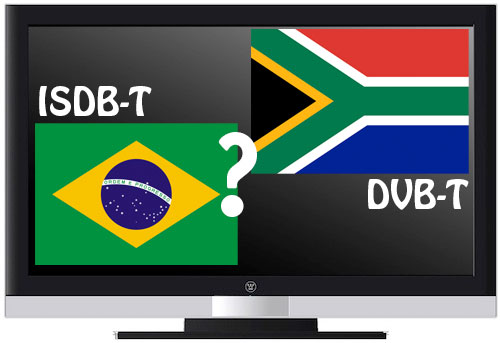The high price of set-top boxes and digital receivers appears to have had a marked impact on the take-up of digital terrestrial television in Brazil, a new SA-commissioned report has found.
According to a new report, Brazil’s decision to adopt a variation of Japan’s integrated service digital broadcasting (ISDB-T) for digital television has inhibited the South American country’s migration from analogue to digital.
The report, commissioned by SA’s National Association of Broadcasters and prepared by the UK’s Farncombe Strategy, provides detailed insight into take-up by Brazilian consumers of digital television services.
The NAB, which represents SA broadcasters — both public and commercial — and broadcast signal distributors like Sentech and Orbicom, commissioned the report in light of the SA government’s review of its 2006 decision to adopt Europe’s digital video broadcasting (DVB-T) standard.
That review has sparked outrage, including from the country’s commercial broadcasters, e.tv and M-Net.
They say that if SA ditches its commitment to DVB-T, analogue-to-digital migration — and the myriad benefits that would flow from it — could be delayed by years. That’s bad news for telecommunications operators who are keen to begin making use of the spectrum that will be freed up through the switch-off of analogue broadcasts.
The commercial broadcasters warn that the country could even miss its commitment to the International Telecommunication Union, a United Nations agency, to switch off analogue broadcasts by 2015.
Japanese and Brazilian lobbyists have been actively trying to get the country to ditch its commitment to DVB-T and choose ISDB-T instead. Local broadcasters say Brazil, in particular, wants to increase economies of scale to drive down the relatively high cost of set-top boxes that use the ISDB-T standard. If the Southern African region were to switch, it could help speed up digital migration in Brazil by bringing down costs.
The Farncombe report says that although digital receivers and set-top box prices in Brazil have come down in the last few years, the prices are still high and have inhibited the migration to digital television.
It says the average price of set-top boxes in Brazil is US$239 (R1 840). Most DVB-T receivers are less than half that price. Also, few receivers are available in retail stores in Brazil, it says, suggesting there’s little demand from consumers.
The NAB, quoting Farncombe’s research, says the launch of digital television in Brazil has “not gone entirely to plan and the Brazilian government has declared it is possible that the analogue switch-off will be delayed”.
Only 2% of 53m Brazilian television households have fixed digital receivers — either set-top boxes or integrated television sets — three years after digital services were first launched, the report says.
Referring to the Farncombe report, NAB executive director Johann Koster says:
- Despite strong government support, digital adoption in Brazil has largely been driven by the natural replacement of television sets and increasing availability of mobile TV handsets, rather than the attractiveness of the digital platform for consumers.
- Brazil’s “Ginga” middleware software, meant to drive interactivity and other services, has not yet been implemented and no receivers with the middleware are available yet. There are no e-government applications available in Brazil, a key area of focus for SA’s department of communications.
- No new digital services are being offered on digital television platforms, which only offer existing channels in high-definition. The lack of additional services has greatly inhibited adoption by consumers.
Communications department director-general Mamodupi Mohlala has consistently denied that the SA government favours ISDB-T or any other standard.
However, she says technical experts have advised the department that DVB-T has proved “problematic”. Both M-Net and e.tv say this is nonsense.
E.tv CEO Marcel Golding last week slammed the department, saying the commercial broadcasters are “not happy with the way things are going. The whole process, since it started, was collaborative, informed, transparent and participative. Now all of a sudden, it’s quasi-unilateral.” — Duncan McLeod, TechCentral
- Subscribe to our free daily newsletter
- Follow us on Twitter or on Facebook





